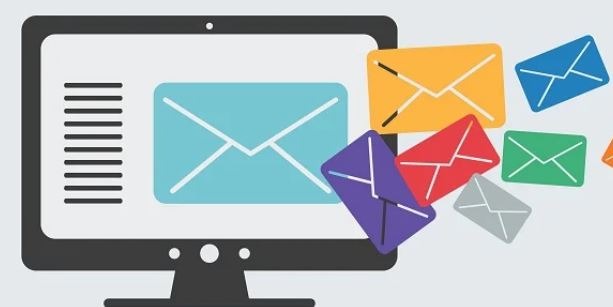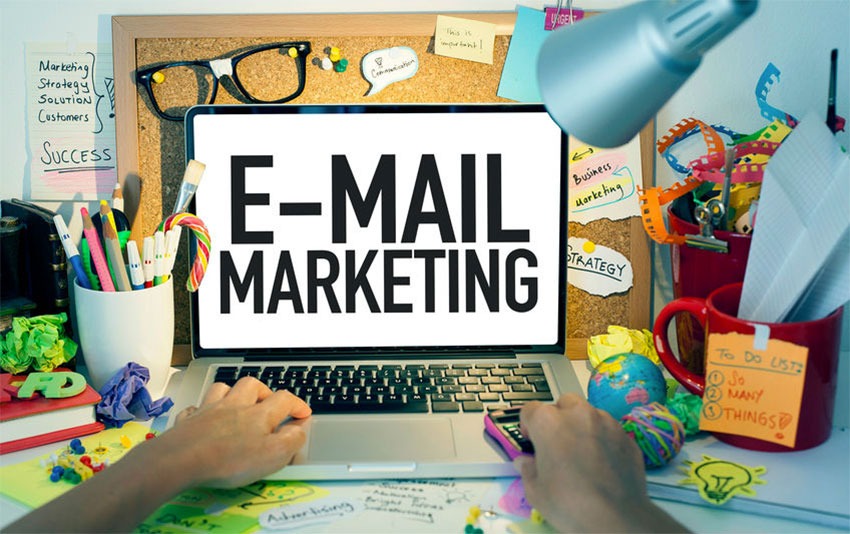 List Building with Email Marketing Rules!
List Building with Email Marketing Rules!
One of the biggest challenges new list builders face is figuring out what to send their subscribers after they sign up. You may have an idea for some ongoing content, maybe a weekly or monthly newsletter. That’s great, but the most important messages your readers will get are the ones that you send them right after they sign up. List building with email marketing makes sense.
There are some very good reasons why you need to get in touch with them immediately after they sign up and email regularly for the first week or two. The main reason is that this is the time when your subscribers are most interested in whatever topic your blog and email list are about. They just invested the time and trusted you enough to give out their email address. That means they are also more likely now than ever to open your emails.
Which brings us to reason number two. Since they are interested and open to what you have to share, this is the perfect time to start building that relationship with your new readers and cement that trust.
It’s also a great chance to open the conversation and learn more about who your readers, subscribers and your target market in general are. Learn more about what motivates them and what they struggle with.
That’s what this post is all about. You’ll learn how to plan and implement a series of emails that automatically go out to your readers as soon as they sign up for your list. Yes, you read that right. You can set it up so it happens on autopilot. You write the emails once, upload them and they will go out to every new reader in order, no matter when this new reader signs up. Whether it’s today or next year.
We do this with the help of an autoresponder, which is part of your autoresponder service that you need to build your list in the first place. My favorite services for autoresponders that I recommend for list building and email marketing are AWeber and Kit (formerly called Convert Kit).
The first email you set up when you start a list is the Welcome email. If you’ve been building a list, you’re familiar with this. We’ll go over the how to of crafting a good welcome email in one of the next chapters, but for now let’s say this is where you thank them for signing up and deliver any freebies you offered to get them on your list in the first place.
This welcome email is an autoresponder email. If I sign up for your list today, I get the email today. If I sign up next Tuesday, I get it next Tuesday. The rest of your autoresponder works the same way. You decide when you want to next email after that – let’s call it “Email 1” to go out. It could be the next day, two days out, or even a week or two after the welcome email. And the same goes for “Email 2”. You decide how long after “Email 1” you want to send it.
We’ll go into the planning and scheduling down further. For now, I want you to understand that the autoresponder is a series of emails that goes out depending on when each subscribers signs up. It is different from the broadcast emails you send – like your weekly newsletter for example – that goes out on a set day and time to everyone currently on your list.
The big advantage of the autoresponder emails is that every single reader that signs up now or in the future will get those messages until you decide to edit or delete them.
And this post is about planning, writing, and uploading a series of autoresponder email messages catering to your brand new subscribers. Ready to get started with list building with email marketing?
Plotting And Planning – What Are Your Goals?
Before you can start to write your emails to new subscribers take a minute to think about your goals and do a little plotting and planning. It’s much easier than you may think and most importantly it will make writing effective a/r messages much easier.
What’s Your Goal With Your List Building and Email Marketing?
Start by thinking about why you’re building a list. Is your main goal to be able to get readers back to your site? Is it to make money by emailing them about offers as well as sharing great content? Is it to build a vibrant and active community on your forum or in your Facebook group? Or is it to get to know your audience and eventually convert at least some of them over to your coaching program or membership site.
Knowing your goals helps you figure out what email messages you want to send to your readers and how many you want to have in this initial series.
What Do You Want To Cover In Your Emails?
Once you’re clear on your goals, it’s time to figure out what you want to cover in your emails. We’ll go over the welcome email in particular further down, but here you want to thank your reader for signing up, set expectations, and of course deliver any freebies you offered as a thank you for signing up.
After that it gets interesting. If your main goal is to grow a list of buyers (for your own products or those you are an affiliate for), you want to work on trust, showing you’re the expert they should listen to and then get them to make that first small purchase.
If your main goal is to get them to come back to your blog over and over again, get them used to daily emails where you highlight some of your best and most popular blog posts. You may also want to encourage your readers to comment and share your posts on social media.
If your main goal is to attract coaching clients, start conversations with your readers. Get them to reply back to you. Share helpful tips they can implement right away to proof to your readers that you can help them make progress.
Come up with a rough outline of what you want to cover in this first week or two you’re your readers first sign up for your list.
How Many Emails Will It Take To Cover That Content?
Got that list? Great. How many emails will it take to cover what you’ve come up with? You want to email your readers pretty frequently in the beginning. How often will partially depend on your market. Look at what your competition is doing to get an idea.
A rough guideline is to email them daily for the first 3 to 7 days and then start to slow it down (every two days, then every three days) until you have weekly autoresponder messages going out in addition to your regular broadcast content.
For the purpose of this post, let’s work on content for a week or two. You want to come up with 7 to 12 messages and figure out how far apart from each other you want to schedule them.
Here’s an example of a possible planning layout:
- Day 0 (the day someone opts in to your list) – Welcome Email
- Day 2 – Email #1
- Day 3 – Email #2
- Day 4 – Email #3
- Day 5 – Email #4
- Day 6 – Email #5
- Day 7 – Email #6
- Day 8 – Email #7
- Day 9 – Email #8
- Day 10 – Email #9
- Day 11 – Email #10
Continue from here with weekly A/R emails
Use this layout or tweak it and make it your own. Then figure out what you want to cover in each of those emails. Don’t overthink this. Just get it done and get to work. You can (and should) always test and see how your emails perform and tweak from there. It’s something we’ll talk about more in the last chapter of this report.
The Welcome Email and Thank You Page
First impressions count. And the same holds true when it comes to email. You want to make a good impression with the Thank you page and first email our readers see from you after signing up for your list.
If you’ve had your list for a while, go ahead and sign up as if you were a regular subscriber. Pay attention to the welcome email and the thank you page. What do you like about it? What can you improve to make a better first impression?
By the way, making a good first impression and marketing to your readers aren’t mutually exclusive. On the contrary. Your readers will be thankful if you have a good offer that’s great value and a good fit for them. Don’t be afraid to market from day one. Just don’t be pushy or spammy about it.
The Thank You Page
The first thing you readers will see after they sign up (and after they confirm their subscription if applicable), is the Thank You Page.
Here are some things you may want to include on your Thank You Page:
- Thank your readers for signing up.
- Remind them to confirm the opt-in if applicable
- Let them know to look for the welcome email
- Share how / where they can get their freebie (or)
- Set up a link to download the freebie.
- Make an offer for an entry level product they might find helpful.
- Your image and signature to create credibility
- Links to your blog and social media profiles
The main thing you want to test down the road is the offer you’re making. Try a few different things and see what converts best. Selling on this page isn’t so much about making money (though that helps of course), but about getting them used to buying from you.
The Welcome Email
Next it’s time to craft a nice little welcome email. The key is again to make a good first impression but also be congruent and consistent with what your readers see on the Thank You page since they’ll likely open this email right after seeing the thank you page.
If you prefer not to deliver your “Thank You” gift on the thank you page, be sure to include a link to it in this email. A link will work better than an email attachment since attachments can land your welcome email in the spam folder. And that’s the last thing you want.
Be casual, be yourself, and start emailing them the way you will continue going forward. Use the same style, tone of voice, and personal closing.
You may want to reiterate the offer from the Thank You page. This is particularly important if it’s a limited time offer and this is their “last chance” to grab the product at a discount for example.
Another good thing to mention is what your reader can expect from you next. Give them a very brief rundown of the emails to come. You may even want to tell them to look for another email from you tomorrow with {….} in the subject line. {…} would be whatever your actual subject line for Email #1 is.
Other than that, keep it short and sweet. Don’t overwhelm them with too much information and too many options to choose from. Welcome them, share the crucial information and save the rest for the next few emails.
Write Them Quick and Keep It Easy
Next it’s time to write the rest of the emails in your autoresponder series. That’s the plan you made in the first chapter. List building with email marketing doesn’t need to be complicated.
The key here is to keep it easy, short and to the point. Don’t make this harder than it is. Often the best emails are written quickly.
Be consistent in your greeting and in your personal closing. Write in a personal style and if you can ask some questions in the first few emails that encourage your readers to reply and email you back. This will help with email deliverability and more importantly it helps you avoid the Gmail promotional tab.
Since Gmail is a huge player in the email market, chances are good that a big chunk of your list signed up using a Gmail address or is having their emails forwarded to a Gmail address. Making sure you get into the priority inbox is important and the best way to do that is to get them to interact with you via said email (in other words, get them to email you back).
This also gives you a lot of information and a great chance to interact one on one with your audience.
Again, don’t spend too much time writing these emails. Write them fast like you would an email to a friend.
Do spend a little time on the subject line. You get one chance to get your readers to open the email. Don’t be pushy or spammy, but think about a way to word your subject line that creates interest or curiosity.
Keeping a swipe file of email subject lines that you like or that have worked well in past can be helpful here. Keep an eye out as you scan through your own email for Subject lines that grab your attention. Save them in the swipe file and see if you can tweak them for your own purposes.
Down the road, you can take a look at the emails you’ve sent and see what subject line and topic has gotten you the best open rates. Use that as a template for crafting other good subject lines.
To recap, write your emails, following your outline from chapter one, and paying particular attention to crafting good subject lines.
Track The Results and Listen To Feedback
Congratulations! The hard work is over and your next job is to sit back and relax.
Send some traffic to your site and your opt-in forms and start growing your list. What’ you’re doing is waiting for data to come in.
Depending on how fast your list is growing, this may take some time. That’s ok. Work on getting more traffic to your blog and tweaking your opt-in forms.
Then after you’ve had at least 100 new subscribers added to your list, log back into your autoresponder and look at the data it’s been collecting for you.
You want to look at open rates, click through, and unsubscribes. Emails with high open rates were either on a topic your readers are very interested in, or they had a great subject line.
Work on more emails like that.
Emails with a high click-through rate also grabbed and kept your readers’ attention.
Emails with higher than usual unsubscribe rates need some work. Go in and edit those first. Then take a look at any emails that didn’t get opened very often. See if you can come up with a better subject line.
Make a few changes, taking note of what you’ve changed. Reset your stats if you can. Otherwise make a note of where the stats were at today. Then wait until you’ve had at least 100 more subscribers. Come back and compare notes.
Rinse and repeat until you run out of ideas for new things to try.
Over time you’ll become a much better email copy writer and email marketer. All it takes is some practice and tracking what’s working. You’ll also get to know your audience much better when you pay attention.
Speaking of which. Another important thing to pay attention to is any email replies you get. You can learn a lot about your readers and your target audience by listening to them. Read every reply you get. You don’t have to take every single one to heart and let me tell you right now that you can never make every single subscriber happy, but if they make a good suggestion, try to implement it.
If you hear the same complaints or suggestions over and over again (from different readers of course), it’s definitely worth looking into.
Load The Emails To Your Autoresponder
Once your emails are written, it’s time to load them to your autoresponder, following the plan you’ve outlined at the beginning. Follow the tutorials and directions for your autoresponder to find out how to add the messages and set up the timing.
Here’s what it looks like in Aweber. If you’re using a different Autoresponder service it will work similar, but the interface will look different.
First you compose the message as a draft, then schedule it as a follow up message.
Track The Results and Listen To Feedback
Congratulations! The hard work is over and your next job is to sit back and relax.
Send some traffic to your site and your opt-in forms and start growing your list. What’ you’re doing is waiting for data to come in.
Depending on how fast your list is growing, this may take some time. That’s ok. Work on getting more traffic to your blog and tweaking your opt-in forms.
Then after you’ve had at least 100 new subscribers added to your list, log back into your autoresponder and look at the data it’s been collecting for you.
You want to look at open rates, click through, and unsubscribes. Emails with high open rates were either on a topic your readers are very interested in, or they had a great subject line.
Work on more emails like that.
Emails with a high click-through rate also grabbed and kept your readers’ attention.
Emails with higher than usual unsubscribe rates need some work. Go in and edit those first. Then take a look at any emails that didn’t get opened very often. See if you can come up with a better subject line.
Make a few changes, taking note of what you’ve changed. Reset your stats if you can. Otherwise make a note of where the stats were at today. Then wait until you’ve had at least 100 more subscribers. Come back and compare notes.
Rinse and repeat until you run out of ideas for new things to try.
Over time you’ll become a much better email copy writer and email marketer. All it takes is some practice and tracking what’s working. You’ll also get to know your audience much better when you pay attention.
Speaking of which. Another important thing to pay attention to is any email replies you get. You can learn a lot about your readers and your target audience by listening to them. Read every reply you get. You don’t have to take every single one to heart and let me tell you right now that you can never make every single subscriber happy, but if they make a good suggestion, try to implement it.
If you hear the same complaints or suggestions over and over again (from different readers of course), it’s definitely worth looking into. List building and email marketing are not an exact science.
Tweak and Plan Your Next Batch of Emails
Last but not least, it’s time to get started on the next batch of emails. Let’s say the emails you planned way back in chapter one kept your readers busy for the first two weeks. Sometime during those two weeks, you want to get to work on your next batch of emails. They can certainly be much further spread apart (one per week for example), but you want to make sure you keep adding to your follow up sequence.
Ideally you’ll add more email messages before your fist subscribers start to run out. It may seem like a lot of work, but it will be well worth it. Keep in mind too that this work will pay off for months and years to come as new people sign up for your list.
Set aside a little time once a week or even just once a month to plan, write, and add a new batch of follow up or autoresponder messages. Keep it up and you’ll start to see:
- More traffic to your blog.
- More subscribers as you current readers share your emails with others.
- More interaction on your social media accounts if you share those in your emails.
- More one-on-one interaction with your readers and subscribers as they reply to your messages.
- More sale as you add more offers to your follow up funnel.
Lots of great things happen when you get in the habit of starting and keeping up with a follow up series of emails.
List Building with Email Marketing Going Forward
I hope you’ve found this information on creating and uploading your first series of follow up emails helpful. Let’s quickly recap what we’ve covered.
We started out by talking about what a follow up or autoresponder series is and why it’s important to have one in place.
Then we covered plotting and planning a series of email messages your subscribers will receive as soon as they sign up in the week or two right after that.
We spent some time talking about the importance of a well-designed and well written Thank You page and Welcome Email. Remember first impression are important. Make sure the one your email subscribers get of you is a good one.
The next chapter was about getting the actual emails written, followed by a chapter on adding them to your autoresponder service.
We followed it up with a chapter on seeing what’s working and making changes as needed.
Last but not least I gave you some ideas on adding more email messages to your follow up sequence on a regular basis.
I hope you’ve found this post helpful and are ready to get to work writing those first few follow up emails.
Track the Results and Listen to Feedback
Congratulations! The hard work is over and your next job is to sit back and relax.
Send some traffic to your site and your opt-in forms and start growing your list. What’ you’re doing is waiting for data to come in.
Depending on how fast your list is growing, this may take some time. That’s ok. Work on getting more traffic to your blog and tweaking your opt-in forms.
Then after you’ve had at least 100 new subscribers added to your list, log back into your autoresponder and look at the data it’s been collecting for you.
You want to look at open rates, click through, and unsubscribes. Emails with high open rates were either on a topic your readers are very interested in, or they had a great subject line.
Work on more emails like that.
Emails with a high click-through rate also grabbed and kept your readers’ attention.
Emails with higher than usual unsubscribe rates need some work. Go in and edit those first. Then take a look at any emails that didn’t get opened very often. See if you can come up with a better subject line.
Make a few changes, taking note of what you’ve changed. Reset your stats if you can. Otherwise make a note of where the stats were at today. Then wait until you’ve had at least 100 more subscribers. Come back and compare notes. Rinse and repeat until you run out of ideas for new things to try.
Over time you’ll become a much better email copy writer and email marketer. All it takes is some practice and tracking what’s working. You’ll also get to know your audience much better when you pay attention.
Speaking of which… Another important thing to pay attention to is any email replies you get. You can learn a lot about your readers and your target audience by listening to them. Read every reply you get. You don’t have to take every single one to heart and let me tell you right now that you can never make every single subscriber happy, but if they do make a good suggestion, try to implement it and let them know.
If you hear the same complaints or suggestions over and over again (from different readers of course), it’s definitely worth looking into.
Tweak and Plan Your Next Batch of Emails
Last but not least, it’s time to get started on the next batch of emails. Let’s say the emails you planned way back in chapter one kept your readers busy for the first two weeks. Sometime during those two weeks, you want to get to work on your next batch of emails. They can certainly be much further spread apart (one per week for example), but you want to make sure you keep adding to your follow up sequence.
Ideally you’ll add more email messages before your fist subscribers start to run out. It may seem like a lot of work, but it will be well worth it. Keep in mind too that this work will pay off for months and years to come as new people sign up for your list. Building your list and email marketing skills is worthwhile.
Set aside a little time once a week or even just once a month to plan, write, and add a new batch of follow up or autoresponder messages. Keep it up and you’ll start to see:
- More traffic to your blog.
- More subscribers as you current readers share your emails with others.
- More interaction on your social media accounts if you share those in your emails.
- More one-on-one interaction with your readers and subscribers as they reply to your messages.
- More sale as you add more offers to your follow up funnel.
Lots of great things happen when you get in the habit of starting and keeping up with a follow up series of emails.
I hope you’ve found this post on creating and uploading your first series of follow up emails helpful. Let’s quickly recap what we’ve covered.
We started out by talking about what a follow up or autoresponder series is and why it’s important to have one in place.
Then we covered plotting and planning a series of email messages your subscribers will receive as soon as they sign up in the week or two right after that.
We spent some time talking about the importance of a well-designed and well written Thank You page and Welcome Email. Remember first impression are important. Make sure the one your email subscribers get of you is a good one.
The next chapter was about getting the actual emails written, followed by a chapter on adding them to your autoresponder service.
We followed it up with a chapter on seeing what’s working and making changes as needed.
Last but not least I gave you some ideas on adding more email messages to your follow up sequence on a regular basis.
I hope you’ve found this short report helpful and are ready to get to work writing those first few follow up emails. List building with email marketing makes sense. When you begin email marketing, you’ll find that your list will grow more responsive over time, and suddenly your income will increase.
I’m bestselling USA Today and Wall Street Journal author Connie Ragen Green. My goal is to help at least a thousand people to reach six-figures and beyond with an online business. Come along with me, if you will and let us discover how we may further connect to achieve all of your dreams and goals. Knowing how to use list building and email marketing to build visibility and credibility will make a difference.








Great information, Connie! I love what you said about keeping a swipe file of email subject lines that you like or that have worked well in the past. Coming up with effective subject lines can be tough, so this is a great way to never run out of ideas!